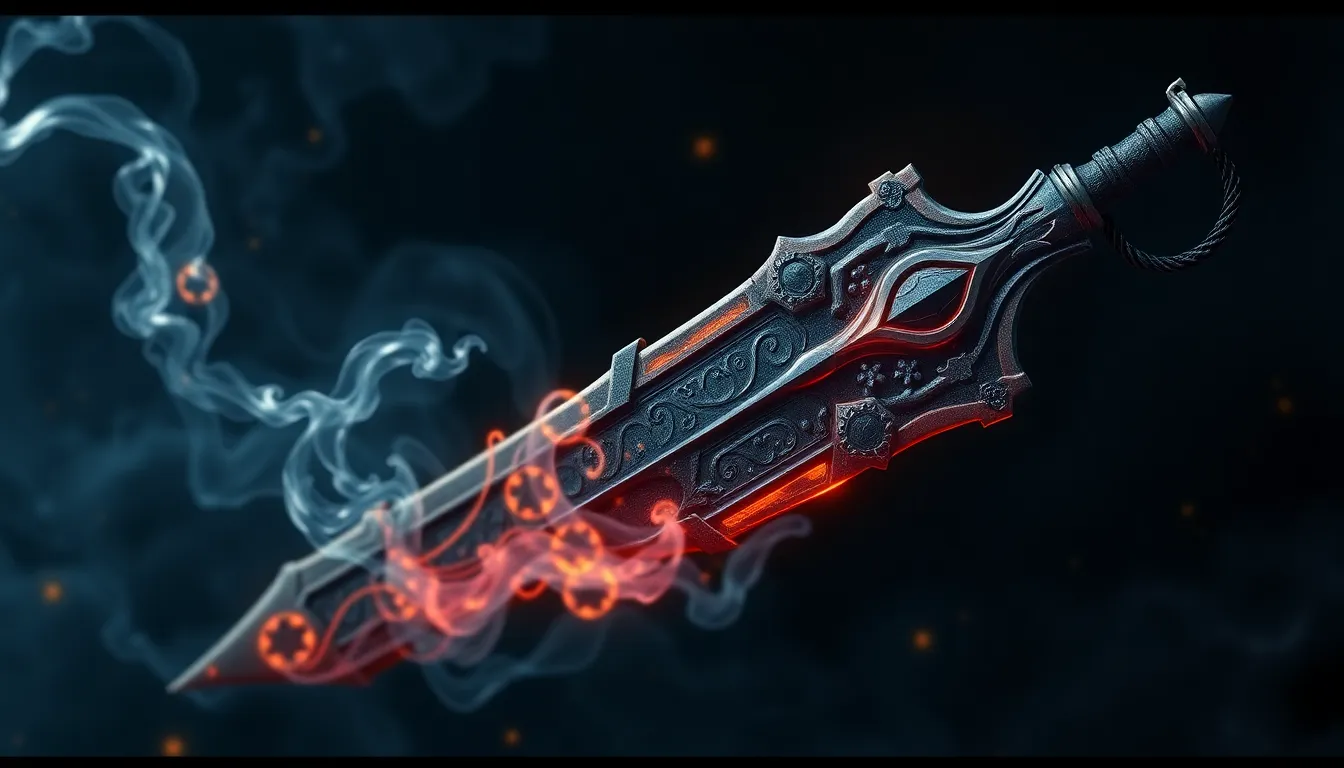The Myths Behind the Metal: The Craft of Legendary Weaponry
I. Introduction
Throughout history, legendary weaponry has held a significant place in the cultural narratives of societies around the globe. These weapons, often associated with heroic figures or pivotal events, not only serve practical purposes but also embody the values, beliefs, and aspirations of the cultures that revere them. From the storied sword of King Arthur to the mystical blades of the East, the myths surrounding these famous weapons add layers of intrigue and fascination.
This article aims to explore the craft and the realities behind these legendary tales, delving into the origins, techniques, and cultural significance of weapons that have transcended their mere physical forms to become icons of power and myth.
II. The Origins of Legendary Weaponry
What makes a weapon ‘legendary’? Historical context plays a crucial role in defining this status. A weapon may be considered legendary due to its association with notable figures, significant historical events, or remarkable craftsmanship that has been celebrated in stories passed down through generations.
- Excalibur: The sword of King Arthur, symbolizing rightful sovereignty.
- Masamune: A legendary Japanese sword crafted by the master smith Masamune, known for its unparalleled sharpness and beauty.
Mythology is instrumental in shaping the narratives surrounding these weapons. Often, the stories evolve through oral traditions, imbuing the weapons with magical properties or extraordinary histories that captivate audiences.
III. The Art of Forging: Techniques and Materials
The craftsmanship behind legendary weapons is as important as the legends themselves. Traditional smithing techniques have been passed down through generations, often shrouded in secrecy and refined through experience.
- Damascus Steel: Renowned for its strength and distinctive patterns, used in many legendary swords.
- Folded Steel: A technique that enhances the blade’s durability and flexibility.
Materials used in crafting these weapons also contribute to their legendary status. While steel and iron are commonly utilized, mythical substances such as adamantium and dragon bone often appear in stories, symbolizing the extraordinary. The significance of craftsmanship cannot be overstated; the skill of the smith transforms raw materials into artifacts of power and beauty.
IV. The Role of Legends and Myths in Weaponry
Legends and myths enhance the allure of weapons, often attributing them with curses, magical properties, or divine origins. This narrative embellishment captures the imagination and elevates the weapon beyond its physical form.
The impact of storytelling on the perception of these weapons is profound. The tales told by bards and poets not only immortalize the weapons but also shape the cultural identity surrounding them. Case studies such as the stories behind iconic weapons help illustrate this impact:
- Glamdring: The sword of Gandalf in “The Lord of the Rings,” said to glow in the presence of goblins.
- Gáe Bulg: A spear from Irish mythology, known for its deadly accuracy and tragic associations.
V. Famous Legendary Weapons and Their Real-World Inspirations
Famous legendary weapons often blur the lines between history and myth. For example:
- Excalibur: While attributed to King Arthur, its historical roots may trace back to various swords from Celtic and Roman Britain.
- Kusanagi: A Japanese sword with deep historical implications, believed to have been discovered in the tail of an eight-headed serpent.
Other notable weapons, like the spear of destiny or the sword of Roland, also reflect a mixture of fact and myth, showcasing how these tales evolve over time.
VI. The Symbolism of Legendary Weapons
Legendary weapons often serve as symbols of power and authority. They represent not only the physical might of their wielders but also their moral and ethical standings. The relationship between the wielder and the weapon in myths can signify a deeper connection, often reflecting the virtues or flaws of the character.
Moreover, these weapons represent cultural identity and values. For instance, the katana in Japanese culture symbolizes honor and the samurai’s way of life, while Excalibur represents justice and rightful rule in Arthurian legend.
VII. Crafting the Myth: How Legends are Born
The creation of weapon myths is a collaborative effort involving poets, bards, and storytellers. These artisans of narrative weave tales that elevate ordinary weapons to legendary status, often embellishing their histories and characteristics as they pass them down through generations.
Over time, the evolution of weapon myths can be influenced by historical events, cultural shifts, and societal values. For example, the portrayal of swords in medieval literature can reflect the chivalric ideals of the time, while modern adaptations may reinterpret these legends through contemporary lenses.
VIII. The Intersection of Reality and Fantasy in Legendary Weapons
In examining legendary weapons, it is essential to navigate the fine line between historical fact and mythological embellishment. Many legendary weapons are rooted in real historical artifacts, yet their stories have been enhanced through the lens of myth.
Modern interpretations of these weapons, particularly in movies, literature, and video games, often draw from traditional tales while infusing them with new life and meaning. The influence of fantasy genres has further shaped public perception, allowing these weapons to thrive in popular culture.
IX. The Modern Craft of Weaponry: Lessons from the Legends
Despite the passage of time, traditional techniques used in weapon crafting remain relevant today. Many contemporary blacksmiths and artisans draw inspiration from legendary weapons, employing age-old methods to create functional art pieces that honor the past.
The resurgence of interest in handcrafted weaponry reflects a desire for authenticity and connection to history. As modern craftsmen embrace these techniques, they not only preserve the legacy of legendary weapons but also continue to forge new myths and stories in the process.



